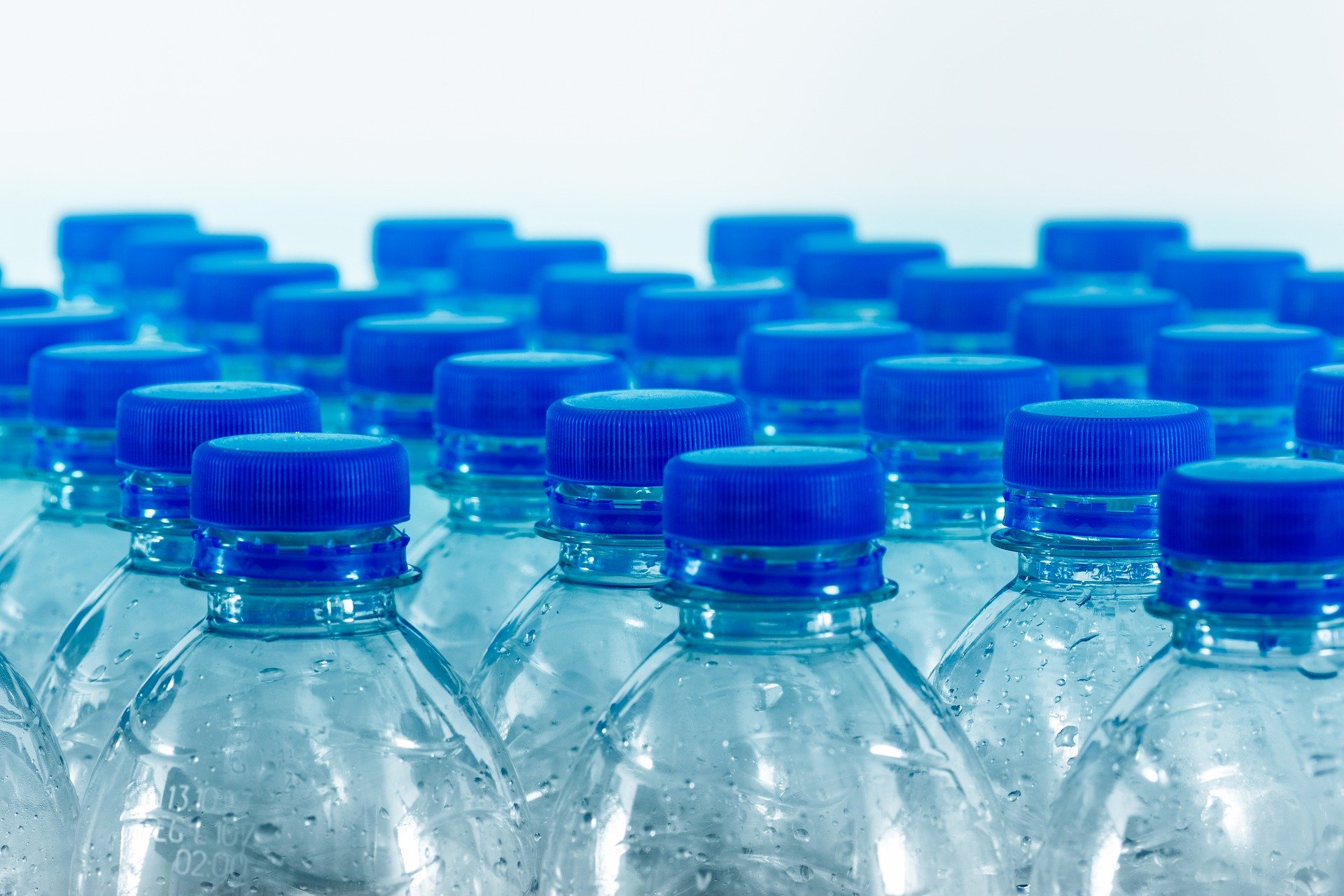With soda sales steadily declining, water sales are on the rise. As people are becoming more health-conscious, they are looking for alternatives to sugary sodas and juices, with water being a popular choice. This means people are looking for more options to choose from when they shop for water. One of the food trends predicted for 2020 is an increase in brands, types, and flavors of bottled waters.
With so many bottled waters to choose from, how do you know which water is the best water? We decided to test the 25 trendiest waters on store shelves. We tested everything from still water, mineral water, pH-balanced water, caffeinated water, and hydrogen infused water. While we cannot substantiate any of the health claims advertised, we did test the composition of the different waters to help provide some points of differentiation among all of the bottled waters out there today.
Our Tests
The test kits and meters we used to compare bottled waters were from TestAssured and are available online. We tested samples from twenty-five different bottled water brands purchased at different grocery stores. The temperature should not impact the tests, but all samples tested were at room temperature.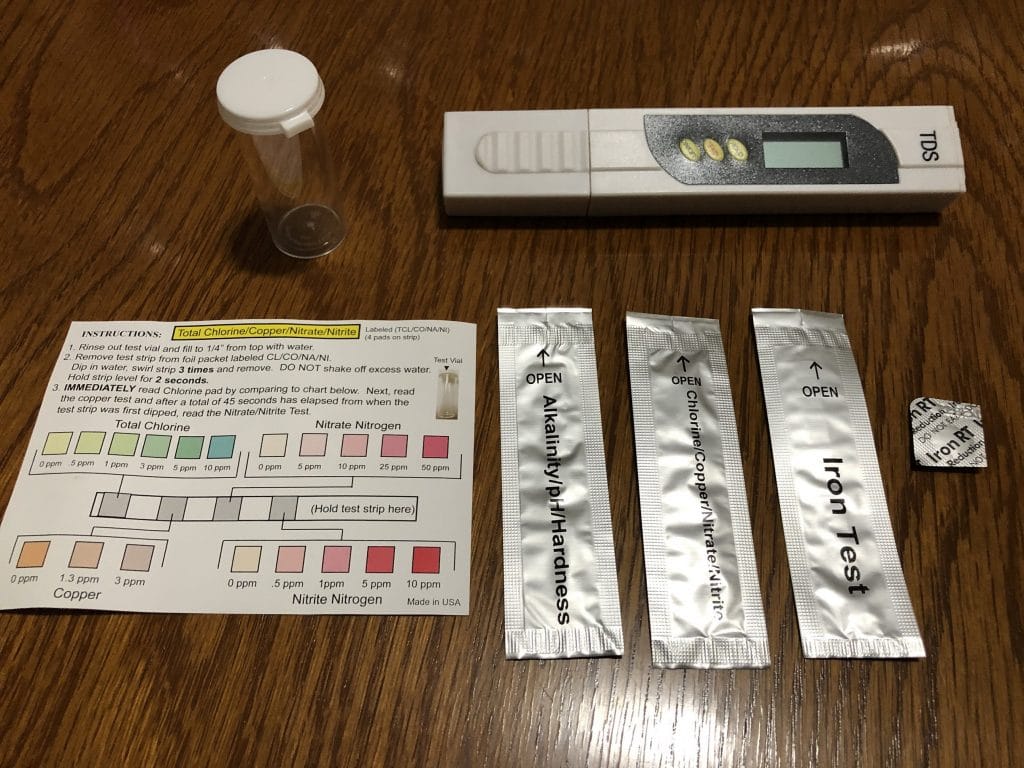
Chlorine, Copper, Nitrates, and Nitrites
The first set of tests were for common water contaminants. This included chlorine, copper, nitrates, and nitrites.
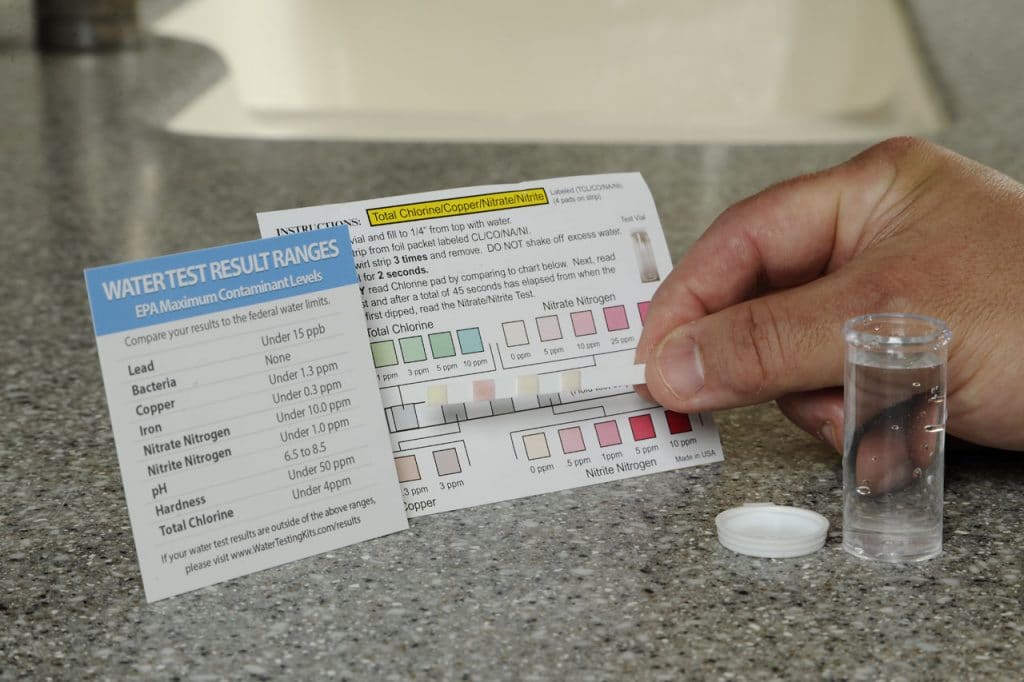
Chlorine can safely be added to water as a disinfectant. At levels higher than 4 parts per million, there is potential for negative health effects. Home dialysis users should test their water for chlorine. Chlorinated water can also be dangerous to fish, aquatic animals, reptiles, and amphibians.
Copper can leach into water supplies through rocks, soil, and copper piping. Copper in drinking water should be at a level below 1,300 parts per billion. High levels of copper can cause gastrointestinal issues and have been associated with liver damage and kidney disease. About half of our samples tested positive for trace amounts of copper, but none had levels that were cause for concern.
Nitrates and nitrites are found in soil fertilizers and can sometimes contaminate drinking supplies. Shallow and poorly constructed wells are highly susceptible. The EPA recommends nitrate levels under 10 parts per million and nitrite levels under 1 part per million for safe drinking water. Higher levels can cause developmental issues, blood disorders, and possibly cancer.
Alkalinity, pH, Hardness, and Iron
The next set of tests revealed more about the quality of the water. These provided much more interesting results. Here we tested for alkalinity, pH, hardness, and iron.
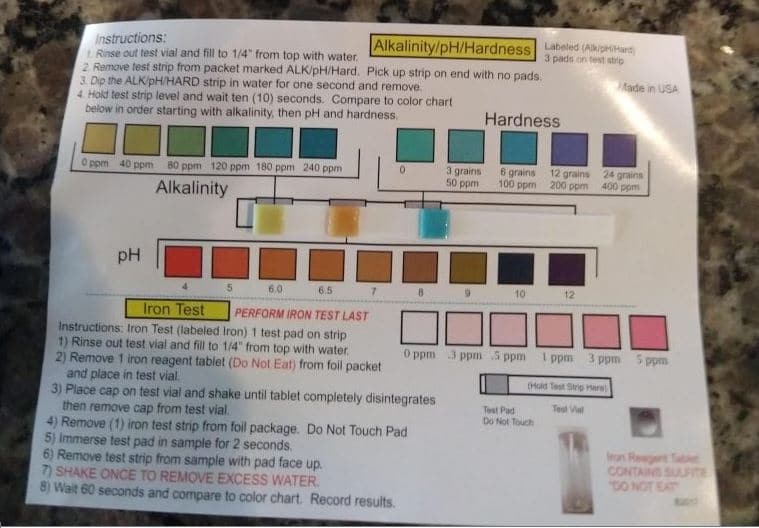
Alkalinity refers to the ability of water to neutralize acid. The alkalinity of a water source is impacted by the surrounding soil and bedrock. High levels of alkaline can disrupt the body’s pH which can cause gastrointestinal issues, confusion, and muscle tremors.
The measure of pH in water is associated with corrosion levels. Water with a low pH is acidic and can leach metal ions from the environment, leading to high levels of toxic metals. Increased pH levels can indicate hard water which causes scaling and damage to plumbing and property.
Hard water usually contains a high concentration of calcium and magnesium that can lead to an unpleasant taste. Hard water has no known health effects, but it can cause a mineral buildup in your pipes and water-using appliances.
Iron is naturally found in the soil where it is absorbed by rainwater and aquifers. If your water is cloudy or has a reddish-brown tint, it could contain above normal levels of iron. High levels of iron can cause an unpleasant taste and leave unsightly stains and deposits on fixtures and appliances.
TDS Testing
The final testing we did was for total dissolved solids, using a TDS meter. The amount of total dissolved solids is a measurement of the weight of all solids that are dissolved in the water. These solids can include minerals, salts, metals, cations, or anions. Since dissolved ionized solids can increase the conductivity of a solution, the TDS meter works by measuring the conductivity of the solution. The conductivity reading is converted into an estimate of the TDS which is an indication of water quality. A high TDS reading doesn’t necessarily mean that water quality is poor, as it also reflects the amount of minerals and salts that are present in the water. These are found naturally in some waters. They can also be added to purified water to improve the taste.

Bottled Waters Test Results
None of the bottled water we tested was positive for nitrates or nitrites, which is good news because they can cause serious health issues. We also did not find any iron in any of our samples. We did have one sample, Essence, that tested positive for a small amount of chlorine, 0.5 ppm, which was probably used in the decontamination process to purify the water. The results for these tests were not surprising since bottled water companies often take extra measures to ensure the quality and purity of their water.
We saw the most variations in results for the alkalinity, hardness, and pH tests since these are areas where manufacturers often manipulate their waters for marketing purposes or to enhance the flavor. The spring waters tended to have higher levels of alkalinity and hardness. Evian, Flow, and Gerolsteiner had the highest alkalinity at 180 ppm. pH varied among the different brands but most had a pH level between 7-8. The waters with the highest pH were Essence and SmartWater Alkaline, with a pH of 9.
Almost all of our samples tested positive for TDS and this is where we saw the broadest range of any of our tests. As manufacturers add minerals and electrolytes to their waters, this typically causes a higher TDS reading. HFACTOR and Penta water had a TDS reading of zero, while Gerolsteiner had more than double of any other brand at 894.

365 Spring Water


- Source: Roxane Springs, Salem, SC
- Ingredients: spring water
- Features: bottled at the source, doubly filtered
- Taste: sweet and light
Avitae

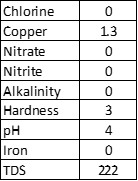
- Source: unknown
- Ingredients: purified water, natural caffeine, natural flavors
- Features: as much caffeine as a cup of coffee
- Taste: bitter
blk.

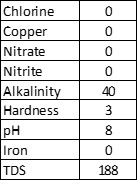
- Source: unknown
- Ingredients: purified water, fulvic trace minerals
- Features: a blend of fulvic trace minerals, hydration, and electrolytes and an alkaline pH 8.0+ water beverage
- Taste: neutral, gritty
BODYARMOR
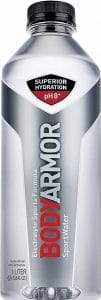
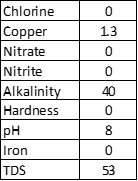
- Source: unknown
- Ingredients: reverse osmosis water, bicarbonate, calcium chloride, magnesium chloride
- Features: pH of 8+, a proprietary sports electrolyte formula, and wide-mouth bottle for faster hydration
- Taste: hint of saltiness, smooth
Core Hydration
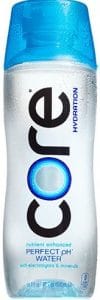
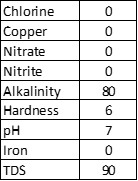
- Source: unknown
- Ingredients: reverse osmosis water, calcium chloride, magnesium chloride, potassium bicarbonate
- Features: ultra-purified with a natural pH balance of 7.4 and a special combination of electrolytes and minerals to help you stay hydrated
- Taste: sweet, a little fruity
Essence


- Source: unknown
- Ingredients: not listed
- Features: purified water with a pH 10+, contains the daily recommended allowance of calcium, magnesium, and zinc acetate organic hibiscus for added nutrition
- Taste: very smooth, neutral flavor
Eternal
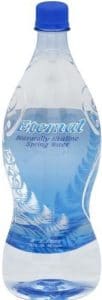
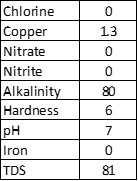
- Source: Smokey Mountains, TN
- Ingredients: spring water
- Features: naturally alkaline, natural electrolytes, natural pH 7.8-8.2
- Taste: light, slightly salty and sweet flavors
Evian


- Source: French Alps
- Ingredients: natural spring water
- Features: natural electrolytes, 7.2 pH balance, carbon-neutral, natural source of electrolytes and minerals
- Taste: slightly tart, smooth
Fiji

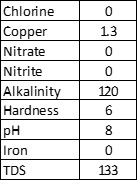
- Source: Yaqara, Viti Levu, Fiji Islands
- Ingredients: natural artisan water
- Features: naturally occurring electrolytes, signature soft, smooth mouthfeel
- Taste: neutral, smooth
Flow
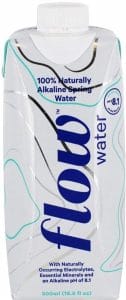
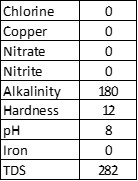
- Source: Canadian Aquifer
- Ingredients: Natural spring water
- Features: 100% naturally alkaline spring water with naturally occurring electrolytes, essential minerals and a pH of 8.1
- Taste: slightly sweet, light
Function: WATER

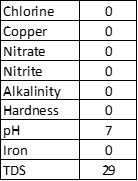
- Source: unknown
- Ingredients: vapor distilled water, electrolytes
- Features: vapor distilled water to remove impurities with added electrolytes for hydration
- Taste: unnatural chemical taste
Gerolsteiner

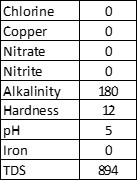
- Source: Gerolstein, Germany
- Ingredients: mineral water, natural carbon dioxide
- Features: high mineral content water with natural carbonation added
- Taste: fizzy, tart, minerally
HFACTOR
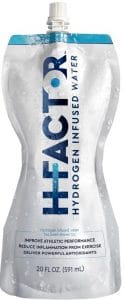

- Source: unknown
- Ingredients: purified water, molecular hydrogen gas
- Features: pure water and pure hydrogen to increase athletic performance, reduce inflammation, and deliver powerful antioxidants
- Taste: slightly sweet, smooth mouthfeel
ICELANDIC


- Source: Olfus Spring, Iceland
- Ingredients: natural spring water
- Features: pH 8.4
- Taste: clean, smooth
PATHWATER


- Source: unknown
- Ingredients: purified water
- Features: recyclable aluminum bottle
- Taste: neutral, smooth
Penta


- Source: natural aquifer
- Ingredients: ultra-purified water
- Features: undergoes a 13-step purification process to extract all impurities
- Taste: light, sweet
PROUD SOURCE
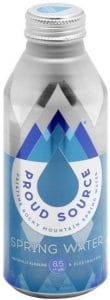
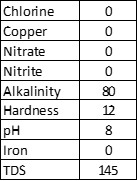
- Source: Mackay Mountains, Custer County, ID
- Ingredients: spring water
- Features: alkaline water with electrolytes and minerals in a BPA-free, recyclable, aluminum can, pH 8.5
- Taste: neutral
RE2AL


- Source: unknown
- Ingredients: purified water, potassium bicarbonate, magnesium chloride, potassium hydroxide
- Features: alkaline water infused with negative ions, ph 8.0
- Taste: very smooth and neutral
SmartWater Alkaline

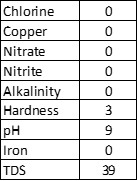
- Source: unknown
- Ingredients: vapor distilled water, calcium chloride, magnesium chloride, potassium bicarbonate
- Features: 9+pH, vapor distilled for purity, electrolytes for taste
- Taste: smooth, neutral, no aftertaste
SmartWater Antioxidant

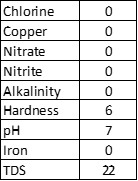
- Source: unknown
- Ingredients: vapor distilled water, calcium chloride, magnesium chloride, potassium bicarbonate, sodium selenate
- Features: added selenium for antioxidants, purely balanced pH, vapor distilled for purity, electrolytes for taste
- Taste: a little salty with a slight metallic aftertaste
SOURCE

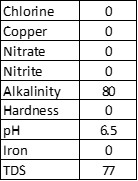
- Source: Llanllyr, Wales
- Ingredients: spring water
- Features: naturally pure and balanced spring water from a carbon-neutral and ethical company
- Taste: crisp, clean, neutral
Topo-Chico

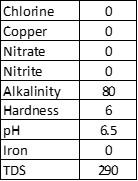
- Source: Monterrey, Mexico
- Ingredients: mineral water, carbon dioxide
- Features: carbonated mineral water
- Taste: slight citrusy taste
Voss


- Source: Norway
- Ingredients: artisan water
- Features: artisan water naturally filtered and protected from pollutants
- Taste: slightly sweet, smooth
Waiakea


- Source: Hawaii
- Ingredients: Hawaiian volcanic water
- Features: filtered through porous volcanic rock, naturally alkaline deep well water with natural electrolytes and minerals
- Taste: light, slightly floral taste
Zephyrhills


- Source: Crystal Springs, FL
- Ingredients: spring water
- Features: 100% natural spring water
- Taste: slightly tart, crisp
The Best and the Worst Bottled Waters
So, which water was the best and which was the worst? That’s hard to say because it depends on what you are looking for in your water.
Among the two sparkling waters we tested, we preferred the taste of Topo Chico over Gerolsteiner.
If you are looking for water that truly stands out, blk. was certainly unique and although the taste was ok, drinking black water was just weird.
We really liked that Pathwater and Proud Source came in aluminum cans and encouraged people to reuse those cans.
RE2AL seemed like it had a lot of hype, but we weren’t really sure what the benefits were.
HFACTOR also had a lot of hype and did claim to be clinically proven to help reduce inflammation, but you needed to drink it within 30 minutes of opening.
Avaite offered an interesting twist on water with added caffeine. They have a number of different offerings, each with varying levels of caffeine. The problem with this one was the taste. The bottle we tested said unflavored, but it did list natural flavors in the ingredients which we assume were used to help mask the bitterness of the caffeine. Unfortunately, it was still very bitter and left a bad aftertaste.
Among the spring waters, Evian is always a winner if you like a slight minerally taste. Fiji and Waiakea are good choices if you like a little sweeter taste.
What it comes down to is that the best water is the water that keeps you coming back for more. Hydration is an important part of good health, so whatever water you choose, and there are plenty to choose from, pick the one that will help you reach your hydration goals.
Testing code for colors
However, this is an example of white text. While white is nice, it is not readable. However, testing code for colors it is. However, this is an example of white text. While white is nice, it is not readable. However, testing code for colors. However, this is an example of white text. While white is nice, it is not readable. However, testing code for colors. However, this is an example of white text. While white is nice, it is not readable. However, testing code for colors. However, this is an example of white text. While white is nice, it is not readable. However, testing code for colors. However, this is an example of white text. While white is nice, it is not readable. However, testing code for colors. This is an example of white text. While white is nice, it is not readable.

